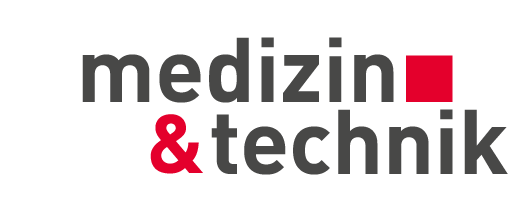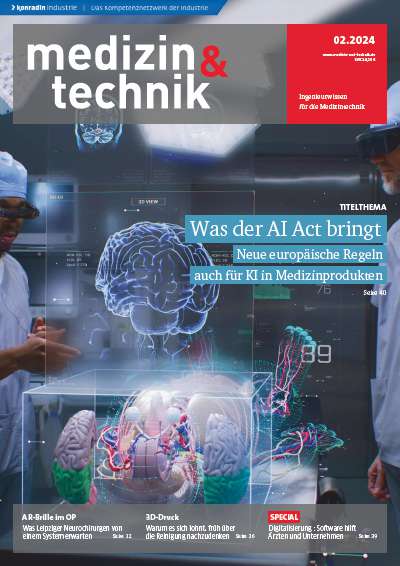In Germany you often hear talk of Industry 4.0; in the USA you will hear of the Internet of Things—but who is winning the race to digitize factories and services? A study by Roland Berger paints a mixed picture across Europe.
Only two countries in Western Europe have not lost in industrial value added since the beginning of the millennium: Germany and Switzerland. In Germany, the share of the manufacturing industry in the gross value added increased from 22% to 24% in this period; in Switzerland it has remained stable at 19%. “This high degree of industrialization is the best way for these two countries to stay ahead in Industry 4.0 in the long term,” asserts Sven Siepen, Managing Partner in the Swiss office at Roland Berger Strategy Consultants.
Roland Berger examined in a study on Industry 4.0 primarily Switzerland’s role in regard to the fourth industrial revolution in Europe, this role, but placed within a whole European context. Siepen comes to the conclusion that the gap between countries fit for Industry 4.0 and those lagging behind is very wide in Europe.
Roland Berger included in its analysis other factors in addition to the percentage of industrial value added. How open is the national economy? Is it possible to adapt to converging industries? How good are innovative networks? How qualified, flexible, and interdisciplinary are employees in promoting Industry 4.0 in their companies? All of these results went into the Industry 4.0 Readiness Index (see above diagram), in which Germany and Switzerland were at the very top in the group of Frontrunners.
“The degree of automation in manufacturing is already very high in these two countries; the employees are open, by training and mentally, to digitization—and they not only can operate a machine manually, but also know how to use a programmable logic controller,” says Siepen. These two Industry 4.0 Frontrunners also have the right broadband infrastructure, a culture of research, and the involvement of trade associations, which help the topic to flourish by raising the necessary awareness. In this respect, there are also good opportunities here for companies from medical technology—which is widely represented in both countries— to generate efficiency advantages through greater networking of production and to make new digital business models successful.
This also holds true—although to a lesser extent—for Austria, Finland, Sweden, and Ireland. The two Scandinavian countries promote the topic heavily. “They understood very early on that Industry 4.0 can help make their industry remain competitive despite the high wage level,” explains Siepen.
Ireland is a special case, however. It has been able to use tax incentives to establish a cluster of pharmaceutical and medical technology manufacturers and a cluster of IT providers. Siepen: “The companies of the two industries blur the traditional lines between their industries and communicate with one another. It is a very fertile ground for digitization and the development of Industry 4.0.”
A number of Eastern European countries— including the Czech Republic and Hungary—rank as Traditionalists in the Roland Berger study: the portion of industrial value added is relatively high here; in the Czech Republic it is even at 25%. “The companies in these countries have a broad base of well trained workers that will be able to master the transition to the digital age with ease,” assures Siepen. The Traditionalists are lacking funding initiatives from the side of government and associations, however.
According to Roland Berger, countries in which the degree of industrialization has been on a downward trend in the last 15 years—especially the two previous classic industrial nations Great Britain and France—are having a more difficult time in the Industry 4.0 race. “The industrial basis is simply missing here,” explains Siepen. The portion of industrial value added is now only at 10% in the two countries; in 2001 they were both at 15%. Great Britain and France decided early on to strengthen the service sector at the cost of industry. A strong middle class that has the support it needs to become a driver of innovation is also missing from both sides of the English Channel.
The group of European countries identified by the Roland Berger study as Hesitators is lagging very far behind: Italy, Spain, and Portugal are among them—countries that are still grappling with major economic problems. Sustainable, economic development programs that would be able to advance digitization are largely absent here.
Siepen advises against viewing Europe as the hub of Industry 4.0, however. “It is close since the term was developed in Germany. But the USA is significantly more advanced than Europe,” according to his estimation. At 12%, the percentage of industrial value added in the USA is still below the European average of 15%. “But the IT industry in Silicon Valley and research institutes like MIT forced the topic of digitization in the USA very strongly and very early,” explains Roland Berger’s expert.
And he believes there is one other country poised to take a leading position: “labor costs are going up in China, which is why production will become more heavily automated there in the future. This situation brings, in addition to the costs, another advantage that will also have an effect particularly in medical technology: the quality of the processes and the products will go up, which will increase export opportunities for Chinese manufacturers. Industry 4.0 in China may be able to give the medical technology industry a boost.”
Sabine Koll Journalist in Böblingen
It will not work without support from government or from associations
Ranking of Europe’s Countries in Industry 4.0
In Dialog
Mr. Siepen, you think that some European countries are very well equipped to welcome the digital Industry 4.0 era. So why do you in your study remind the European Union to promote the topic?
Europe is at the crossroads. The gaps between individual countries in Europe in regard to the next industrial revolution are very wide. It is important to close these gaps for two reasons: to create equal opportunities and to boost the clout of Europe in Industry 4.0. It does not make sense for each country, each company, each university, or each trade association to be working alone on digitization.
What do you specifically recommend?
We are inviting the European Union to get everybody together at the same table and to advance this topic further in a consolidated effort—such as by forming clusters at the European level. The clusters could be industry clusters or university clusters. The latter could be developed as a counterpart to MIT. With the European Commissioner for Digital Economy and Society, Günther Oettinger, we have a very good starting point from which to coordinate the individual initiatives that are necessary throughout Europe—meaning the forming of clusters or training programs.
So there is currently no cooperation at the international level when it comes to Industry 4.0?
Unfortunately, I see very little. In contrast: sometimes a country will have several industrial associations operating in parallel to keep the topic moving. These forces could be bundled together much better in my opinion.
Are investments needed too?
For Europe to obtain a leading role in Industry 4.0, it has to invest EUR 90 billion a year over the next 15 years—which is a total of EUR 1.35 trillion. Traditional industrial policy is not enough.
Unsere Webinar-Empfehlung
Erfahren Sie, was sich in der Medizintechnik-Branche derzeit im Bereich 3D-Druck, Digitalisierung & Automatisierung sowie beim Thema Nachhaltigkeit tut.
Teilen:








